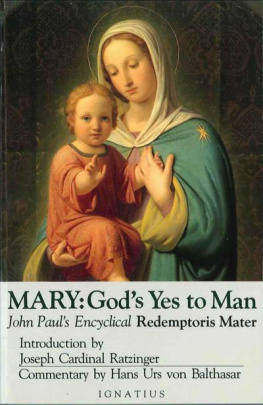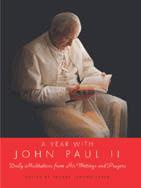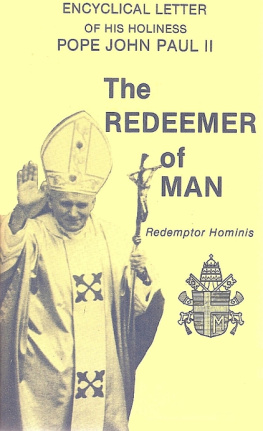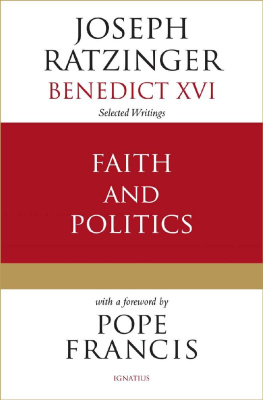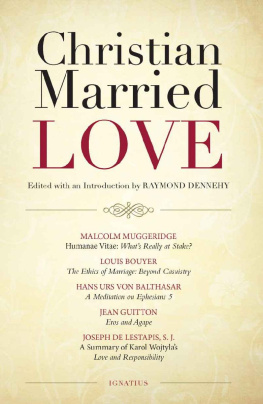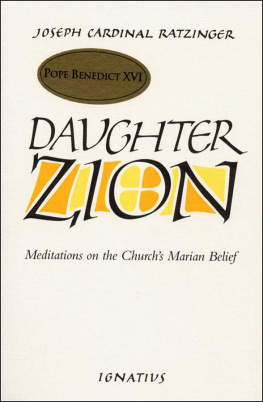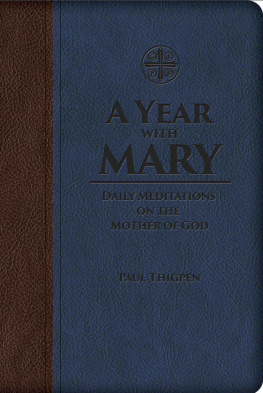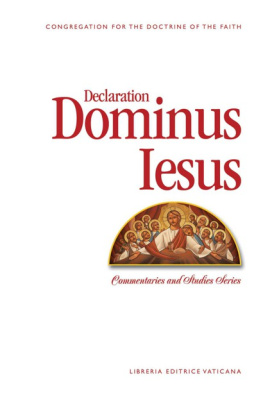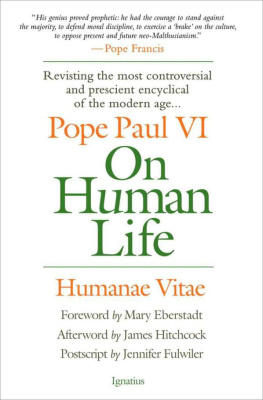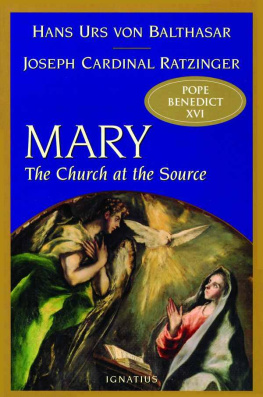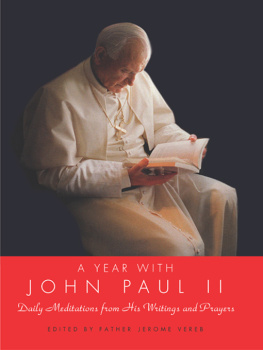Mary: Gods Yes to Man
Mary:
Gods Yes to Man
P OPE J OHN P AUL II
Encyclical Letter
Mother of the Redeemer
Introduction by
Joseph Cardinal Ratzinger
Commentary by
Hans Urs von Balthasar
IGNATIUS PRESS SAN FRANCISCO
Title of the German original:
Maria: Gottes Ja zum Menschen
1987 Verlag Herder
Freiburg im Breisgau
Cover design by Marcia Ryan
Cover art: Madonna and Child
by Franz Ittenbach
Used with kind permission
of Elena Wenzel
With ecclesiastical approval
1988 Ignatius Press, San Francisco
All rights reserved
ISBN 978-0-89870-219-4
Library of Congress catalogue number 88-80726
Printed in the United States of America
CONTENTS
The Sign of the Woman
by
Joseph Cardinal Ratzinger
Encyclical Letter
Mother of the Redeemer
by
Pope John Paul II
Commentary
by
Hans Urs von Balthasar
The Sign of the Woman
An Introduction to the Encyclical
Redemptoris Mater
by
C ARDINAL J OSEPH R ATZINGER
An encyclical on Mary, a Marian Yearneither exactly arouses enthusiasm among certain Catholics. They are concerned about negative interferences with the ecumenical dialogue. They see the danger of an overly emotional piety that will not measure up to serious theological standards. To be sure, the appearance of feminist thinking has added an unexpected new aspect that threatens to create some more confusion. On the one hand, feminists tell us that the Churchs teaching on Mary simply codifies the dependency of women and glorifies their oppression. By extolling the Virgin and Mother, the obedient, humble servant, the role of women, as it were, has been restricted for centuries. Exalt the woman better to oppress her! On the other hand, however, the person of Mary is used by some to initiate a new and revolutionary interpretation of the Bible: liberation theology points to the Magnificat, which proclaims that the mighty will be deposed, the lowly raised up. Thus Marys song becomes the motto of a certain theology that considers it its duty to advocate the overthrow of established social structures.
A feminist reading of the Bible sees Mary as the emancipated woman who, uninhibited and conscious of her destiny, confronts a culture dominated by men. Together with other presumptive elements she is used as a hermeneutical key that allegedly discloses an original, totally different Christianity whose liberating energy was soon enough smothered and buried under the dominating male power structure. Such interpretations are easily recognized as tendentious and forced; but they still may do some good in directing our attention to the Bible and its uncorrupted message on Mary. This could well be the right moment, then, to expect more willing listeners for the teachings of a Marian encyclical whose entire purpose is to bring out what the Bible has to say.
In order to facilitate the reading and understanding of this papal document, I begin with some explanations about its specific methodology. A second section discusses four of its basic concepts.
I. METHODOLOGY
1. Unity of the Bible
The encyclical presents itself in large part as a meditation on the Bible. A historico-critical exegesis is presupposed; but the next step then leads to theological interpretation proper. What does this mean? How is it done? The basic rule for such an approach comes from Vatican IPs Constitution on Divine Revelation, chapter 3:
But, since Holy Scripture must be read and interpreted in the same spirit in which it was written, no less serious attention must be given to the content and unity of the whole of Scripture if the meaning of the sacred texts is to be correctly worked out. The living Tradition of the whole Church must be taken into account along with the harmony which exists between elements of the Faith (no. 12).
The basic precondition for all theological interpretation, therefore, lies in the conviction that Scripture is one book with a true inherent unity, in spite of its conflicting tensions, its many human authors, its long history of composition. This precondition, again, derives from the conviction that Scripture ultimately is the work of a single Author who appears under both a human and a divine aspect. First, Scripture originated with the one historical embodiment of the People of God who through all the turns of its history never lost its inner identity. Whenever this People of God is speaking, not just incidentally and on the surface but from the heart of its identity, it indeed speaks within the stages of its history, yet nevertheless always as one and the same subject. And this leads us to the second, the divine, aspect: this inner identity results from guidance by the one Spirit. Wherever the core of this identity is manifested, there speaks not merely a man or a people, but God himself in human words: the one Spirit who is the abiding inner power leading this People through its history.
Theological interpretation of Scripture, then, means this: not only to listen to the historical authors and their concurrent or conflicting messages, but also to search for the one voice in the totality of the texts, to search for the inner identity that sustains and unites this totality. A merely historical methodology, as it were, tries to single out specific facts neatly at the historical moment of their origins, thus isolating such a moment from all the rest and fixating it in its time. Theological interpretation, in contrast, while not disregarding this endeavor, goes further: the historical moment does not exist in isolation; indeed, it is part of a whole; it can be understood correctly only against the background and in the context of the whole. So, the methodology here is really very simple: Scripture interprets Scripture. Scripture interprets itself. Listening to Scriptures own interpretation through Scripture itself is a characteristic property of this encyclical. There is no attempt to explain the biblical texts in their individual moments through outside sources that may add much historical flavor, but no deeper understanding. Rather, the encyclical tries to let the biblical texts speak entirely on their own, in their multi-voiced diversity, and so it searches for an understanding from their inherent relationships.
Further, to emphasize the unity of Scripture implies a second principle: Scripture is to be read as a testimony for the present; it offers not just testimony about things and thoughts of the past but about timeless truth. This, too, cannot be the primary purpose of a strictly historical exegesis that looks back on Scriptures origin in the past and perforce reads it as a document of the past. From this, of course, we can learn something as well, as from all history, but only by analogy. The question about truth is essentially alien to modern science. It is a naive and unscientific question. And yet, it is the proper question of the Bible insofar as it is the Bible: What is truth? For enlightened Pilate this is a non-question; to pose it means already to dismiss it. We are not that different either. This question makes sense only if the Bible is a testimony for the present; if in the Bible we hear the words of someone who is present, and if this someone is distinguished from all other living subjects of history by being linked to the truth and so being able to proclaim truth in human language.
Faith in these principles lies at the core of all theological exegesis. With such an attitude, the Pope converses with the Bible. He considers the Bibles words within the larger biblical unity and accepts them as truth, as testimony about the true relationship between God and us. Thus the Bible is truly relevant for us; without any artificial updating it is in itself highly up-to-date.
2. The female line in the Bible
The so-called Gospel of the Egyptians from the second century has Jesus say: I have come to abolish the works of woman.
Next page
